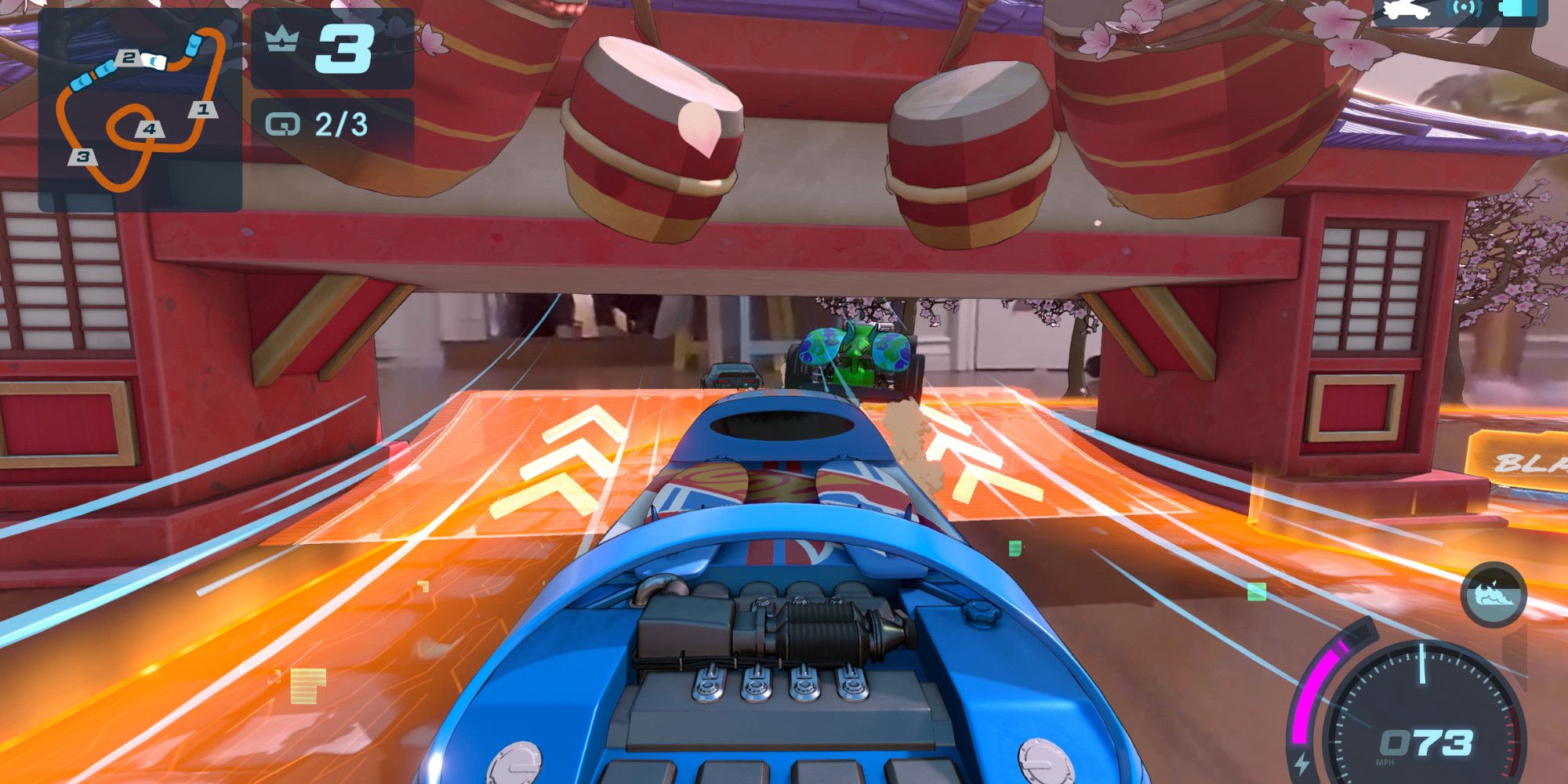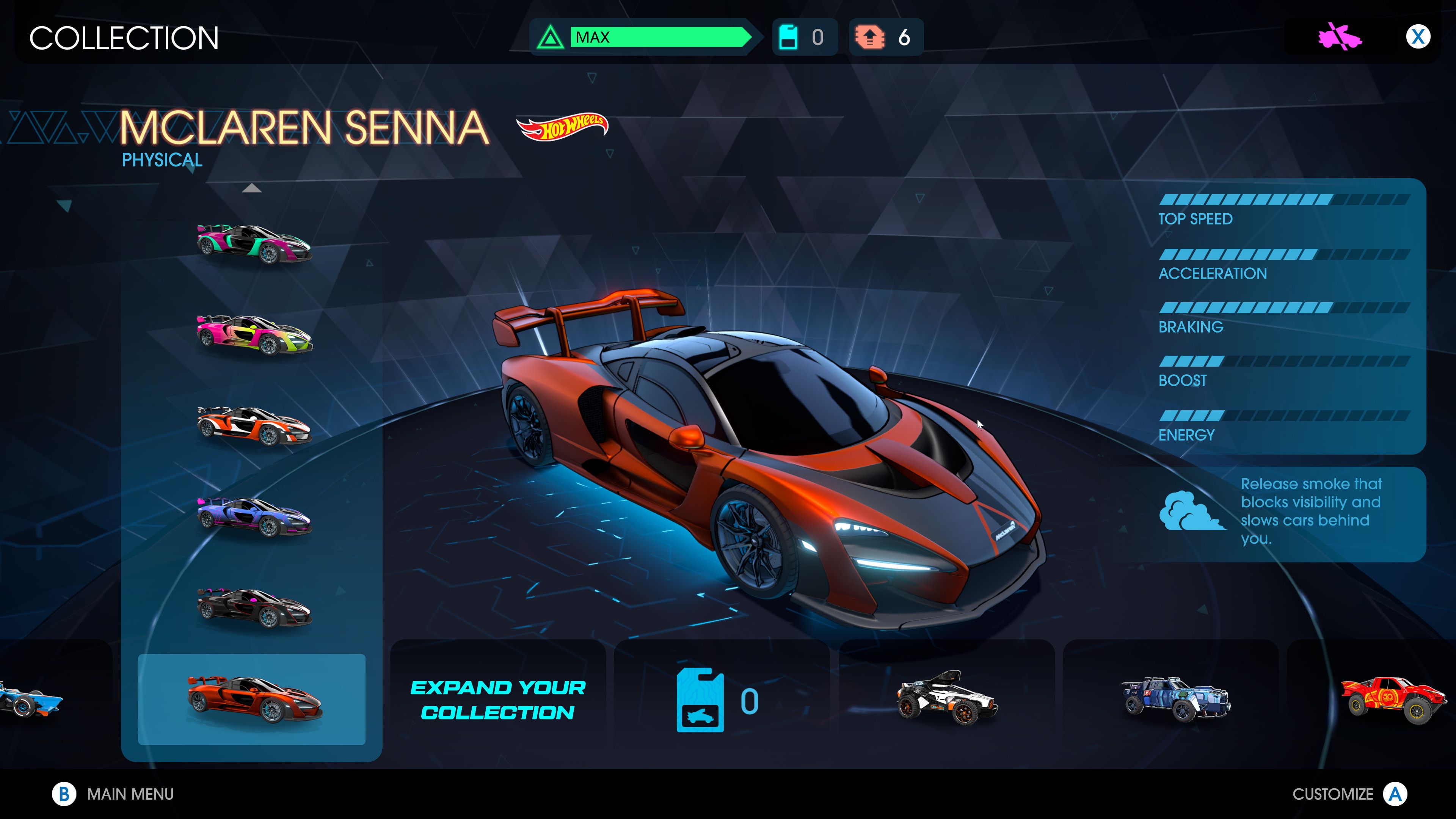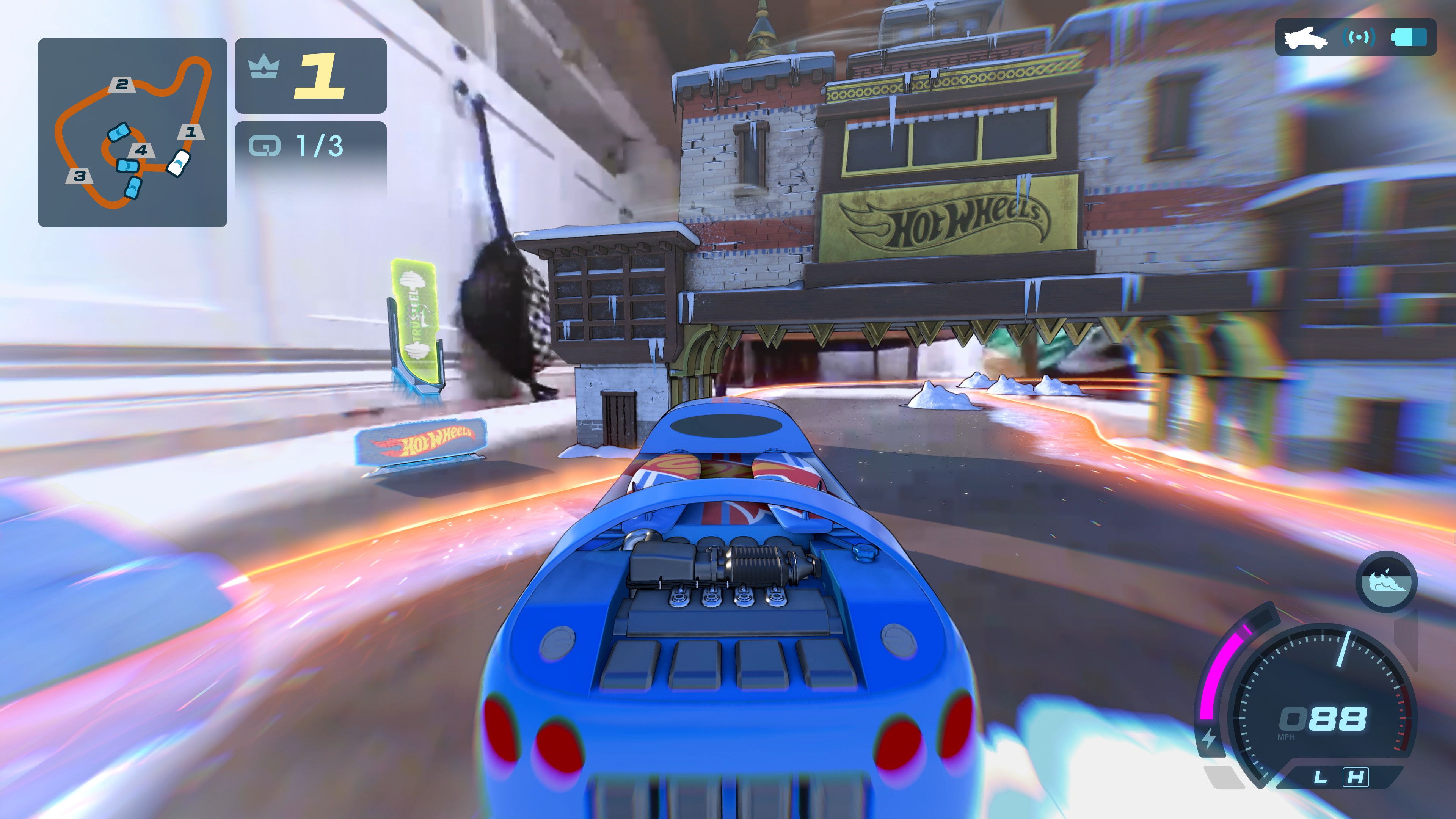Augmented Reality exists in an almost purely-theoretical space right now. We may see AR emerge on VR headsets eventually, but the passthrough camera quality on the Quest 2 and PSVR2 is too poor to facilitate games, while dedicated AR devices like the Magic Leap 2 are geared towards enterprise, not gaming. Most people’s only exposure to AR is Pokemon Go, which isn’t much more than a battery-draining gimmick - not exactly an immersive AR experience. That could change soon thanks to Velan Studios, makers of Knockout City and Mario Kart Live: Home Circuit. Its new RC car-based AR game, Hot Wheel: Rift Rally, has a lot in common with Mario Kart Live. But where Mario Kart felt like a proof of concept for AR racing games, Hot Wheels feels like a fully realized experience.
Rift Rally is a PS4/PS5 and iOS game that comes bundled with a full-sized (as opposed to Hot Wheels-sized) remote-controlled car called The Chameleon. The Chameleon has a 1080p camera mounted in the center, so while driving it through your phone or television, you’re looking at the world from a slightly dirty first-person perspective. The reason you need to see a bit of the car in your frame is because The Chameleon, as its name implies, can transform into dozens of different Hot Wheels cars.
If you’ve played Mario Kart Live, the basics of Rift Rally will be familiar to you. In the box are four gateways that you’ll use to create the track in your home. No matter how you shape or size the track, Rift Rally has a way of dynamically adjusting the races and challenges to support it. There are two main game modes: a stunt mode where you can drive around freely practicing stunts like burnouts and wheelies, and a campaign mode where you’ll race other cars and play mini games in a wide variety of virtual worlds that come to life right in your home.
Rift Rally is a major step forward from Mario Kart Live though. As novel as Home Circuit was, it was held back by myriad technical issues and lousy performance. Since it connected to your network through the Switch, players had to stay close to the car to maintain a connection. This meant tracks couldn’t be too long or go around walls. Even if you kept your track small, frame dips and desyncs were common. Rift Rally fixes that issue by connecting directly to your Wifi network, meaning you should be able to build your track and drive your car anywhere you have a wireless signal. When I tested it out with the developers from Velan Studios last week, the track ran through an open living room, but if it works as well as they claim, then players will have a lot more opportunities for complex track design than they did with Mario Kart.
Rift Rally is also a far more robust game than Home Circuit was. Home Circuit had a series of cups and unlockable cosmetic options for custom tracks, but Rift Rally has more variety in the different cars and challenges it offers, as well as actual progression systems.
When you complete challenges in the campaign or earn points through combos in the stunt mode, you earn currency that you can use to unlock new cars. Every car in Rift Rally has its own set of stats, from speed to breaking to boost, and when you swap cars, The Chameleon dynamically changes to match it. As you play, you’ll also earn tokens you can use to adjust the stats of your favorite cars, so if you want a little extra speed or better handling, you can make those minor changes until each car is tuned just right. To see and feel those changes happen in the real-life Chameleon is impressive, and just one of the many ways that Rift Rally takes AR to the next level.
While playing, it's easy to forget that you’re driving a car in real life. The overlay and interactions are so utterly transformative that, even though I was only driving in a circle around a sofa, I had a hard time keeping track of where my car actually was. There’s a wide variety of different track types that all have their own themes, hazards, and objectives. One race turned all the gates into paifang and introduced a Chinese dragon that flew around the track breathing fire, while another race looked like a futuristic city filled with patrol drones that would chase and lock you down if you exceeded the speed limit. Anytime you run over dragon fire or one of the patrol’s speed traps, the car slows down and becomes difficult to control. The combination of haptic response in the controller and the physical effect on the car make these hazards feel totally real. In just an hour, Rift Rally sold me on the potential of AR in a way no other experience ever has.
I do have some reservations. The game only comes with one car, meaning you’ll need to buy two entire sets just to race a friend, and you can’t even use the extra gates to make the track more complicated. To compensate, there’s a multiplayer mode that allows up to four players to control the same car, with the driver randomly swapping mid-race. It could make for a fun challenge, but it doesn’t sound like much of a substitute for actual multiplayer racing.
The Chameleon also struggled when transitioning from hardwood floor to carpet. Our track was entirely on hardwood while a nearby area rug served as our out-of-bounds, so it made sense that the car would have a bumpy, slower time on the rug. My home has some carpet and some hardwood though, so I’m curious to see how it handles the transition, or if it even performs on carpet at all.
Hot Wheels: Rift Rally is one of those toys that makes me envious of kids today. RC cars were a big part of my childhood, and something like this would have totally blown my 8-year-old mind. It also feels like an important step towards even more AR toys. As someone that occasionally builds FPV drones, I’d love to see what Velan Studios could do with a flying version. Hot Wheels: Rift Rally hits store shelves March 14, so check back next month for the full review.



